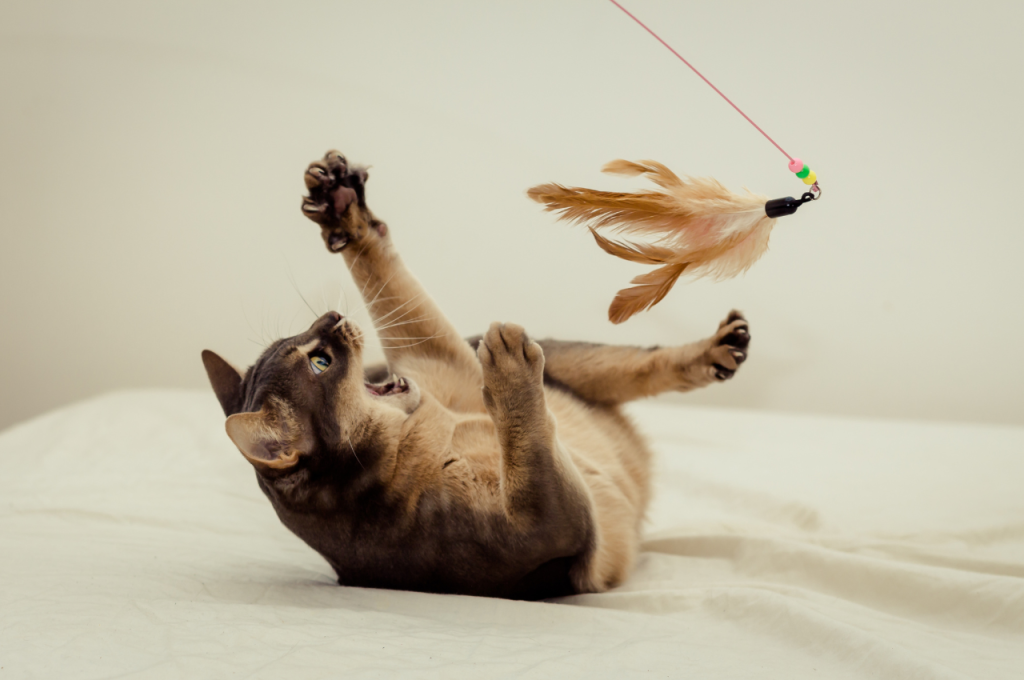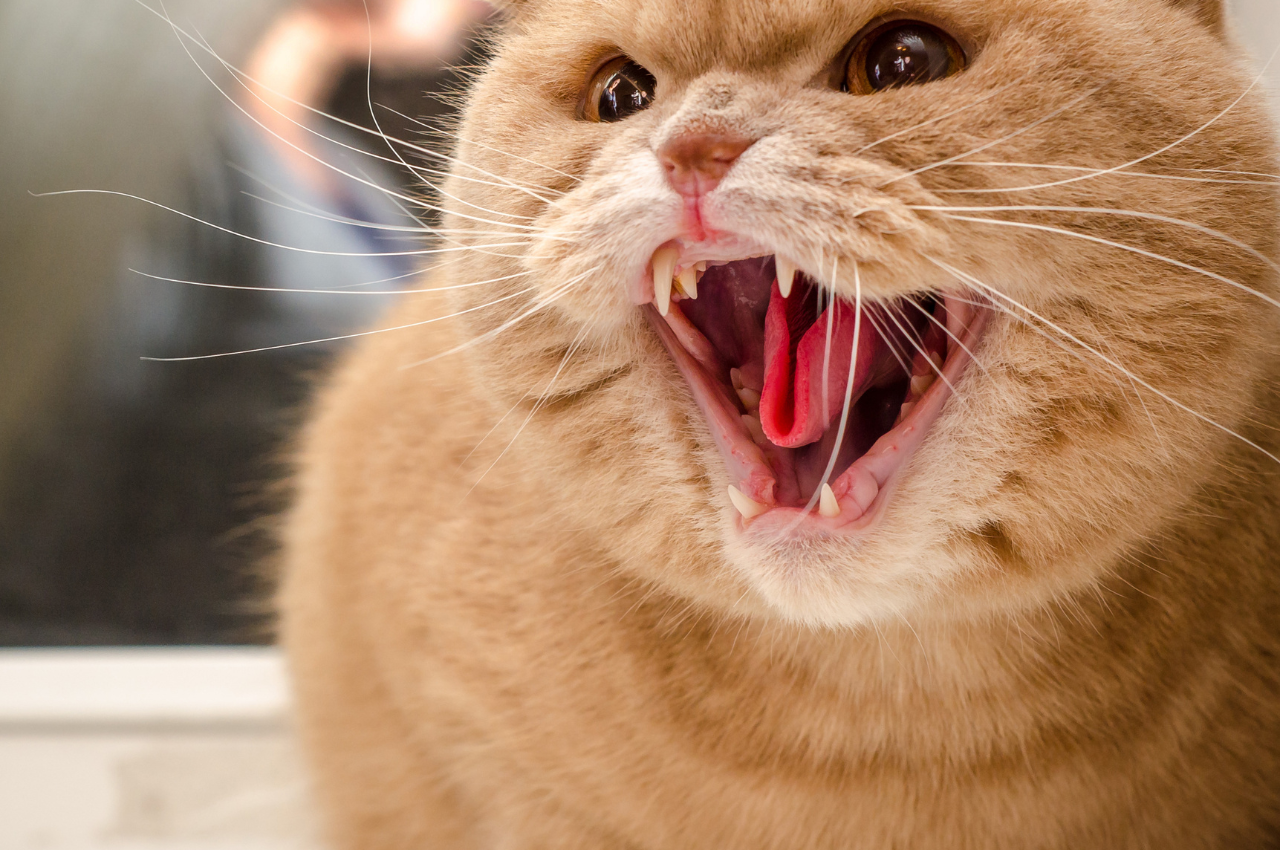To comfort an angry cat, offer gentle petting and soothing words to help calm their nerves. Give them space if they’re too agitated, as pushing interaction can make things worse. Keep your movements slow and avoid eye contact, which can be perceived as a threat.
Create a calm environment by reducing noise and eliminating any stressors, such as other animals or unfamiliar scents. Use calming aids, like pheromone sprays, or offer their favorite treats to build positive associations. It’s important to remain patient and respectful of your cat’s boundaries, allowing them to approach you when they feel safe again. If your cat continues to display aggression, it might be necessary to consult a veterinarian or behavior specialist for further guidance.
Recognizing Signs of Feline Anger
Recognizing signs of feline anger is crucial to avoiding potential conflicts or injuries. Cats often display their anger through body language and vocal cues. A puffed-up tail, flattened ears, and dilated pupils are clear indicators of distress. Hissing, growling, or low-pitched yowls are common vocal signs of anger or fear.

Additionally, an angry cat may swat or lash out with its claws if it feels threatened. Other subtle signs include twitching tails, tense body postures, and refusing to make eye contact. Understanding these signals can help prevent escalation and give you the opportunity to create a calm environment to soothe your cat.
Physical Indicators
When a cat is angry, there are clear physical indicators to look out for. Dilated pupils, flattened ears, and a twitching tail are common signs of an angry cat. Additionally, hissing and growling are audible cues of feline anger.
Behavioral Clues
Understanding a cat’s behavior is essential in identifying signs of anger. Avoidance, aggression, and sudden changes in body posture are behavioral clues that indicate a cat is feeling upset. Excessive grooming or loss of appetite can also signal distress in felines.
Immediate Response to Aggression
When dealing with an angry cat, an immediate response to aggression is crucial for safety and effective de-escalation. Understanding how to comfort an angry cat in the heat of the moment can help diffuse the situation and prevent injury to both the cat and the person involved.
Safety First
To ensure safety when comforting an angry cat, it’s essential to prioritize personal protection. Wearing thick gloves and long sleeves can shield you from potential scratches or bites. Additionally, creating a barrier between yourself and the cat using a blanket or towel can provide an added layer of safety during the interaction.
De-escalation Techniques
- Approach the cat calmly and avoid making sudden movements.
- Speak softly and avoid direct eye contact to reduce the cat’s stress.
- Offer a safe space for the cat to retreat to, such as a familiar hiding spot or a comfortable pet bed.
- Use interactive toys or treats to redirect the cat’s focus away from aggression.
- Refrain from physically restraining the cat, as this can escalate the situation further.
Creating a Calming Environment
Creating a Calming Environment is essential for helping an angry cat to relax and feel at ease. By providing a peaceful setting, you can help your feline friend to de-escalate and find comfort. Here are some effective ways to create a calming environment for your angry cat:
Quiet Spaces
It’s important to provide your cat with quiet spaces where they can retreat and unwind. This can be a secluded corner of a room or a cozy nook that is away from noise and commotion.
Comfort Items
Comfort items such as soft blankets, cushy beds, and familiar toys can help create a soothing environment for your cat. These items provide a sense of security and familiarity, which can help alleviate their anger and anxiety.
The Role of Scent in Cat Soothing
Scent plays an important role in soothing an angry cat. Studies have shown that certain scents, like lavender and chamomile, have a calming effect on cats and can help reduce stress and anxiety. Using scented products or diffusing essential oils can be a helpful way to comfort an upset feline.
Cats are known for their independent nature, but they can also get angry and agitated at times. Understanding their behavior and providing them with comfort is vital to maintain their well-being. One of the essential factors that can help in calming down an angry cat is the role of scent.
Familiar Smells
Cats have a keen sense of smell, and familiar smells can help in soothing their nerves. You can use their favorite toys, blankets, or bedding that has their scent on it to provide them comfort. Additionally, you can use your clothes or a piece of fabric that has your scent on it to help them feel close to you. This can be especially useful if you are away from home for extended periods.
Pheromone Diffusers
Pheromone diffusers are another effective way of providing a calming scent to your cat. These diffusers release pheromones that mimic the natural calming scents produced by cats. They can help in reducing stress and anxiety in cats, making them feel more relaxed. You can easily find these diffusers in pet stores or online, and they are safe to use around cats.
In conclusion, cats have a unique way of perceiving the world, and their sense of smell plays a crucial role in their behavior. By understanding the role of scent in cat soothing, you can provide them with the comfort and care they need, even in times of distress.
Interactive Play as a Distraction
When a cat is feeling angry or upset, interactive play can be a great way to distract them and help them calm down. Engaging your cat in playtime activities not only provides a healthy outlet for their energy but also helps shift their focus away from whatever is causing their agitation.

Choosing The Right Toys
When selecting toys for interactive play, opt for ones that encourage movement and mimic natural hunting behaviors. Toys such as feather wands, laser pointers, and interactive puzzle toys are great choices for engaging your cat’s attention and stimulating their mind.
Engagement Tips
- Rotate toys regularly to keep your cat interested.
- Ensure the play area is safe and free of distractions.
- Use a variety of toys to maintain your cat’s interest.
Long-term Strategies for Anxious Cats
To comfort an angry cat, use long-term strategies like creating safe spaces, providing interactive toys, and maintaining a consistent routine. Patience and positive reinforcement can help anxious cats feel secure and calm in their environment.
Cats are notorious for their unpredictable and sometimes aggressive behavior, particularly when they’re anxious or stressed. While there are plenty of short-term strategies for calming an angry cat, it’s important to also focus on long-term solutions to help your feline friend feel more relaxed and comfortable in their environment. Here are some effective long-term strategies for managing anxiety in cats.
Routine Maintenance
Routine maintenance is an essential part of keeping your cat calm and happy. This includes providing them with a clean litter box, fresh water, and high-quality food. Additionally, regular grooming can help to reduce stress and anxiety in cats. Brushing your cat’s fur, trimming their nails, and cleaning their ears can all be beneficial for their overall well-being.
Behavioral Training
Behavioral training can be a helpful way to manage anxiety in cats. This may involve working with a professional animal behaviorist to identify the root cause of your cat’s anxiety and develop a training plan to help them overcome it. Some common behavioral training techniques for anxious cats include positive reinforcement, desensitization, and counter-conditioning.
Creating a calming environment is another effective long-term strategy for managing anxiety in cats. This may involve setting up a designated space for your cat to retreat to when they’re feeling stressed, such as a cozy bed or a quiet room. Additionally, providing your cat with plenty of toys and scratching posts can help to keep them entertained and engaged, reducing their overall stress levels.
In conclusion, managing anxiety in cats requires a combination of short-term and long-term strategies. By focusing on routine maintenance, behavioral training, and creating a calming environment, you can help your feline friend feel more relaxed and comfortable in their surroundings. With a little patience and dedication, you can help your cat overcome their anxiety and live a happy, healthy life.
Understanding Feline Body Language
Cats communicate through body language. It is crucial to understand what their tail movements, ear, and whisker positions signify.
Tail Movements
- A tucked tail indicates fear or submission.
- An upright tail signifies a happy or content cat.
- A swishing tail can show agitation or annoyance.
Ear and Whisker Positions
- Ears forward suggest curiosity or friendliness.
- Flattened ears signal fear or aggression.
- Whiskers forward means excitement or engagement.
When to Consult a Professional
To comfort an angry cat, it’s important to consult a professional if their behavior becomes aggressive or dangerous. A veterinarian or animal behaviorist can provide guidance on how to address the underlying cause of the anger and prevent future episodes.

Veterinarian Visits
Regular veterinarian visits are essential for maintaining your cat’s health, but they can also be stressful, especially for an angry or upset cat. To comfort your cat during these visits, it’s important to prepare in advance. Start by getting your cat used to the carrier at home, using treats and positive reinforcement. At the vet’s office, speak in soothing tones and offer gentle petting to ease anxiety. Bringing a familiar item, such as a favorite blanket, can also provide comfort. If your cat remains distressed, ask the vet for advice on stress-relief techniques, such as calming sprays or mild sedatives, to ensure future visits are more peaceful.
Animal Behaviorists
Consider seeking advice from animal behaviorists for specialized guidance on calming techniques.
Conclusion
In caring for an angry cat, patience and understanding are key. By using gentle approaches, you can help your feline friend feel safe and loved. Remember, every cat is unique, so what works for one may not work for another. Stay calm and show empathy towards your furry companion.
